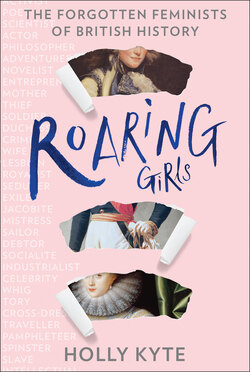Читать книгу Roaring Girls - Holly Kyte - Страница 8
INTRODUCTION
ОглавлениеGirls, we’re told, are not supposed to roar. We’re supposed to shut up, be quiet, stop nagging. We’re supposed to calm down, dear. If we don’t, we’re bossy, we’re aggressive, we’re nasty, we’re bloody difficult. We’re a bunch of loud-mouthed feminazis and hysterical drama queens. If our skirts are too short, we’re asking for it, but if we don’t make an effort, we should be ashamed. If we don’t speak out, how can we expect recognition? But if we do speak out, we get trolled. And that’s in the twenty-first century, after four waves of feminism, when equality has supposedly been won.
Imagine, just for a moment, that you’re a woman in the seventeenth century. In your world, feminism doesn’t exist. You’ve been born into a rights vacuum. Your life is one long list of obligations and prohibitions. Your sole destiny as a wife and mother has been preordained since day one and the feminine ideal expected of you is to be chaste, modest, obedient – and, whenever possible, silent.
But what if you don’t want to be silent? What if you want to roar?
Mary Frith was just such a woman. A notorious cross-dressing thief in Jacobean London, she was smashing up every rule in the book when she swaggered onto the stage of the Fortune Theatre in the spring of 1611, dressed in a doublet and a pair of hose, sword in one hand, clay pipe in the other, to perform the closing number of the play she had inspired. It was called The Roaring Girl.
A Roaring Girl was loud when she should be quiet, disruptive when she should be submissive, sexual when she should be pure, ‘masculine’ when she should be ‘feminine’. She was everything a woman was not supposed to be, and in a world before feminism, she was society’s worst nightmare.[1]
